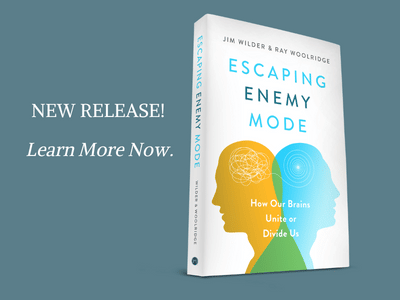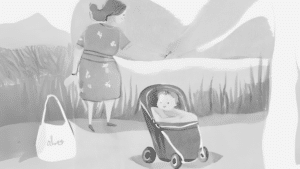This year my family had a lot going on for Mother’s Day. It was busy. In fact, it was so busy that it did not work for us to celebrate Mother’s Day like we usually would – on the day, together as a family. We decided to reschedule my Mother’s Day celebration to another time where we could breathe easier.
After some time passed, the rescheduled Mother’s Day event was approaching. I felt excited to have quality time with my boys. (I’m smiling here!) I noticed an excited tension in my body as I began counting down to the activities that my family planned for me. It sort of felt like Christmas morning all over again! (More smiles here.)
As Chris and I were preparing for bed the night before the official rescheduled Mother’s Day celebration, I heard my husband say, “Honey, I’m not feeling well. I may be getting sick.” Uh-Oh. I noticed a slight knot form in my stomach. My breathing grew shallow. I took a deep breath and decided to take my husband’s temperature. Sure enough. He had a fever. (Sad face.) The knot grew larger in my stomach. My heart sank. My face fell. I noticed tears forming in my eyes.
While I was sad for my sick husband who was a bit miserable, I felt frustrated because I wanted him to be healthy and available. (Frustrated face here.) I felt hopeless as my anticipation of the joyful fun faded away. (Defeated-looking face here.) I felt sad because of the loss. (Downcast expression here.) You see, I was SO looking forward to the fun that was in store. Now, sadly, these plans were ruined. (Exasperated expression here.)
Unfortunately, when I feel disappointed my tendency is to lash out at the person who I perceive caused the disappointment. I may get snappy or a bit sharp in my tone. In this case, I did not want to follow my historically unhelpful pattern. I took a deep breath from my belly, then I told Jesus how sad and mad I was feeling. I asked for Immanuel’s help to calm down. I prayed for extra endurance to respond in a way that best reflected my heart. (Hopeful expression here.)
With a few more deep breaths, I started to feel the knot in my stomach dissolve. My shoulders relaxed. The tension in my face disappeared. A picture came to my mind as I thought about how miserable Chris must be feeling. Knowing my husband’s sensitive heart, and his desire to spoil me, I realized how unhappy he must feel over these circumstances. I now felt compassion towards him. (Compassionate expression here.) Whenever I feel disappointed, it is like my heart to still care about the feelings and needs of other people. At this point, I checked on him and tucked him into bed.
Now that I could breathe easier and I felt more peaceful, I could settle into bed with the assurance there would be more opportunities for special moments with my crew. I had the thought, “Maybe this celebration when it does happen, will be even more meaningful and special for me.” This thought brought a warm smile.
In my story, I included a description how my body was feeling in the midst of my disappointed feelings. I talked about how I felt as I returned to relational “glad to be togetherness.” I shared emotion words for what I was feeling (sad, angry, hopeless) and this was a story that I was involved in. You knew my thoughts and feelings as I went along. This was a story that I did not need to be guarded in telling so I felt comfortable sharing this with you. My story was not too intense which makes it a good story that is appropriate for training. I kept the story concise to avoid getting lost in too many words. If you watched me tell the story, you would see the authentic emotion on my face and you would hear it in my voice. This is important because it conveys the emotional content to your brain’s emotional control center for maximum impact. In other words, not only do I genuinely feel the emotion when I remember it in my story, but I convey the emotion to you. When I say, “I felt frustrated, hopeless, sad and angry” I would not have a smile on my face with an upbeat tone of voice. Rather, my face would appear distressed and my voice tone would match my face and the relevant emotion.
Stories are an excellent way to train our brain to see a picture of how we might want to act in the midst of upsetting emotion. It is here where we can learn a new way of handling a situation. Many of us can handle at least one of the six negative emotions we are wired to feel. The six are sadness, anger, fear, shame, disgust and hopeless despair. Most of us have certain emotions that are sticking points, where we get stuck. If we share stories about the emotions we handle well, and our friends share stories of the emotions they handle well, we can build a library of examples that will help us learn how to successfully manage all of the emotions. This news brings me hope and much excitement! (Big smile here!)
Go on, tell someone a redemptive return to joy story today and watch what happens. You can learn more about returning to joy in Living From The Heart Jesus Gave You, The Complete Guide To Living With Men, Joy Starts Here and Transforming Fellowship. Find these books here.

We Never Outgrow the Need to Receive
By Claudia Hendricks When we hear the word “infant” our mind instantaneously tends to dismiss the topic thinking it does not concern us as adults.








